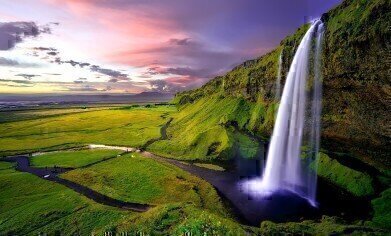Water/Wastewater
A Beginner's Guide to River Pollution
Aug 14 2021
Although the Earth’s surface is more than two-thirds covered by water, just 1% of that volume resides in our rivers and streams. We depend upon this bodies of water to access water fit for human consumption – but nonetheless, rivers all across the globe are becoming increasingly polluted.
Even the Ganges, which is one of the holiest rivers in India, is also one of the most contaminated on the planet – and it’s not a problem confined to the developing world. This article will take a brief look at what causes river pollution, where it goes and what are the consequences of this unfortunate phenomenon.
What causes river pollution?
There are a number of different factors which contribute to river pollution. These include:
- Industrial discharge. When power plants, factories and other large industrial sites discharge their waste into the natural environment without adequately treating the effluent, water quality is compromised.
- Littering. Sadly, the human race does not have an exemplary track record when it comes to cleaning up after itself. Plastic pollution caused by irresponsible disposal of waste is a huge problem for rivers all over the world.
- Microplastic pollution. Microplastics are tiny particles of plastic that are found within many cleaning agents, cosmetic products and even clothing items, which are washed down our drains and into rivers. While it’s not fully understood just how dangerous plastics are, they severely impact the quality of river water.
- Floods. In periods of excessive rainfall, urban and rural areas can become flooded. In the former, pollution from road surfaces can be washed into rivers, while in the latter, agricultural waste and fertilising chemicals can run off into these water bodies.
Where does river pollution go?
Unless a river is subject to adequate wastewater treatment methods, the pollution contained within it will ultimately end up out at sea. This means that not only are our streams and rivers becoming increasingly contaminated, but so too are the marine environments near our coastlines, having a significant impact on the flora and fauna which reside in those habitats.
What are the consequences of river pollution?
Allowing pollution to spread unchecked in freshwater and marine environments can disrupt the delicate balance of the ecosystems within them. For example, an excess of phosphorous, hydrogen or ammonia can stimulate the growth of certain types of algae, which consume more than their fair share of oxygen and block out sunlight. This inhibits the growth and survival of other species in the ecosystem.
Meanwhile, plastic and microplastic pollution can damage the digestive tracts and disrupt the habits of underwater animals. As well as becoming entangled in this kind of waste and drowning or starving as a result, animals can also ingest the tiny particles of pollution and cause harm to their insides, or else occupy space in their stomachs without gaining any nutritional benefits. Chemical pollution, too, can have very grave consequences for the life beneath the surface of the water, which is why river conservation is so important.
Events
IWA World Water Congress & Exhibition
Aug 11 2024 Toronto, Canada
Aug 25 2024 Stockholm, Sweden and online
Sep 03 2024 Mexico City, Mexico
Sep 03 2024 Mexico City, Mexico
Sep 03 2024 San Diego, CA, USA



..jpg)









